英文讀本
-
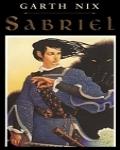
Sabriel (The Abhorsen Trilogy)
Since childhood, Sabriel has lived outside the walls of the Old Kingdom, away from the power of Free Magic, and away from the Dead who refuse to stay dead. But now her father, the Mage Abhorson, is missing, and Sabriel must cross into that world to find him. With Mogget, whose feline form hides a powerful, perhaps malevolent spirit, and Touchstone, a young Charter Mage, Sabriel travels deep into the Old Kingdom. There she confronts an evil that threatens much more than her life'and comes face to face with her own hidden destiny. . . Garth Nix's first young adult novel, Sabriel was recently nominated for the Aurealis Award for Excellence in Science Fiction in Australia.

The Tale of Peter Rabbit
The Tale of Peter Rabbit is the first in the series of children's books written and illustrated by Beatrix Potter, and is perhaps her best-known work. The book was written for private amusement, but publication was urged by Potter's friends.
The Tale of Peter Rabbit has sold more than 40 million copies worldwide.

And Now, And Here
This book contains early discourses in which Osho examines one of man』s greatest taboos: death. Exposing the fallacy behind the notion that death is a calamity, Osho also throws light on the paradoxical relationship between life and death. In addition, the reader is lead through Osho』s specially devised meditation related to the experience of death, techniques to increase awareness and to recall past lives.

John Donne Selected Poems
John Donne (1572-1631) was the most outstanding of the English Metaphysical Poets and a churchman famous for his spellbinding sermons.
Donne's poetry embraces a wide range of secular and religious subjects. He wrote cynical verse about inconstancy, poems about true love, Neoplatonic lyrics on the mystical union of lovers' souls and bodies and brilliant satires and hymns depicting his own spiritual struggles. The two Anniversaries - An Anatomy of the World (1611) and Of the Progress of the Soul (1612)--are elegies for 15-year-old Elizabeth Drury.
Whatever the subject, Donne's poems reveal the same characteristics that typified the work of the metaphysical poets: dazzling wordplay, often explicitly sexual; paradox; subtle argumentation; surprising contrasts; intricate psychological analysis; and striking imagery selected from nontraditional areas such as law, physiology, scholastic philosophy, and mathematics.
Obsessed with the idea of death, Donne preached what was called his own funeral sermon, Death's Duel just a few weeks before he died in London on March 31, 1631.
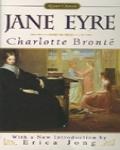
Jane Eyre
Jane Eyre is a first-person narrative of the title character, a small, plain-faced, intelligent and honest English orphan. The novel goes through five distinct stages — Jane's childhood at Gateshead, where she is abused by her aunt and cousins; her education at Lowood Academy, where she acquires friends and role models but also suffers privations; her time as the governess of Thornfield Manor, where she falls in love with her Byronic employer, Edward Rochester; her time with the Rivers family at Marsh's End (or Moor House) and Morton, where her cold clergyman-cousin St John Rivers proposes to her; and her reunion with and marriage to her beloved Rochester at his house of Ferndean. Partly autobiographical, the novel abounds with social criticism and sinister Gothic elements.
Jane Eyre is divided into 38 chapters; most editions are at least 400 pages long (although the preface and introduction on certain copies are liable to take up another 100). The original was published in three volumes — Volume One (comprising chapters one to fifteen), Volume Two (sixteen to 26) and Volume Three (27 to 38).
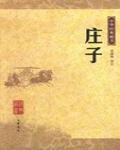
Chuangtse: Mystic and Humorist
《莊子》十一篇英譯
譯者:林語堂
Table:
A Happy Excursion
Levelling All Things
Preservation of Life
This Human World
Deformities
The Great Supreme
Joined Toes
Horses' Hooves
Opening Trunks
On Tolerance
Autumn Floods
Translator's Notes
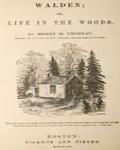
Walden
Walden (also known as Life in the Woods) by Henry David Thoreau is one of the best-known non-fiction books written by an American. Published in 1854, it details Thoreau's life for two years and two months in second-growth forest around the shores of Walden Pond, not far from his friends and family in Concord, Massachusetts. Walden was written so that the stay appears to be a year, with expressed seasonal divisions. Thoreau called it an experiment in simple living.
Walden is neither a novel nor a true autobiography, but a social critique of the Western World, with each chapter heralding some aspect of humanity that needed to be either renounced or praised.
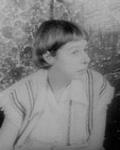
Some Poems of Carson McCulles
Some poems of Carson McCullers

The Joy Luck Club
Four mothers, four daughters, four families whose histories shift with the four winds depending on who's saying the stories. In 1949 four Chinese women, recent immigrants to San Francisco, begin meeting to eat dim sum, play mahjong, and talk. United in shared unspeakable loss and hope, they call themselves the Joy Luck Club. Rather than sink into tragedy, they choose to gather to raise their spirits and money. To despair was to wish back for something already lost. Or to prolong what was already unbearable. Forty years later the stories and history continue.
With wit and sensitivity, Amy Tan examines the sometimes painful, often tender, and always deep connection between mothers and daughters. As each woman reveals her secrets, trying to unravel the truth about her life, the strings become more tangled, more entwined. Mothers boast or despair over daughters, and daughters roll their eyes even as they feel the inextricable tightening of their matriarchal ties. Tan is an astute storyteller, enticing readers to immerse themselves into these lives of complexity and mystery.

The Bonesetter's Daughter
At the beginning of Amy Tan's fourth novel, two packets of papers written in Chinese calligraphy fall into the hands of Ruth Young. One bundle is titled Things I Know Are True and the other, Things I Must Not Forget. The author? That would be the protagonist's mother, LuLing, who has been diagnosed with Alzheimer's disease. In these documents the elderly matriarch, born in China in 1916, has set down a record of her birth and family history, determined to keep the facts from vanishing as her mind deteriorates.
A San Francisco career woman who makes her living by ghostwriting self-help books, Ruth has little idea of her mother's past or true identity. What's more, their relationship has tended to be an angry one. Still, Ruth recognizes the onset of LuLing's decline--along with her own remorse over past rancor--and hires a translator to decipher the packets. She also resolves to ask her mother to tell her about her life. For once, she would ask. She would listen. She would sit down and not be in a hurry or have anything else to do.
Framed at either end by Ruth's chapters, the central portion of The Bonesetter's Daughter takes place in China in the remote, mountainous region where anthropologists discovered Peking Man in the 1920s. Here superstition and tradition rule over a succession of tiny villages. And here LuLing grows up under the watchful eye of her hideously scarred nursemaid, Precious Auntie. As she makes clear, it's not an enviable setting:
I noticed the ripe stench of a pig pasture, the pockmarked land dug up by dragon-bone dream-seekers, the holes in the walls, the mud by the wells, the dustiness of the unpaved roads. I saw how all the women we passed, young and old, had the same bland face, sleepy eyes that were mirrors of their sleepy minds.
Nor is rural isolation the worst of it. LuLing's family, a clan of ink makers, believes itself cursed by its connection to a local doctor, who cooks up his potions and remedies from human bones. And indeed, a great deal of bad luck befalls the narrator and her sister GaoLing before they can finally engineer their escape from China. Along the way, familial squabbles erupt around every corner, particularly among mothers, daughters, and sisters. And as she did in her earlier The Joy Luck Club, Amy Tan uses these conflicts to explore the intricate dynamic that exists between first-generation Americans and their immigrant elders. --Victoria Jenkins
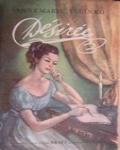
Desiree's Diary(Book One)
This book is the dairy of a French girl who lived in the time of Napoleon Bonaparte. She was a real person. So were others who come into her story. Their names appear in the history books of Europe; but there they are dead people ----- and in Desiree's diary they are alive.
Here we can see, through a woman's eyes, how history was made. She was there. She knew the men and women who made it. She almost married Napoleon himself.
No one really understood him. Not even Desiree. She hated his wars; but she never hated the man. He has no heart, she said. And she was sorry for him, because love and peace had no place in his life. In her own life she found true love, with Jean Bernadotte. But in those days a soldier's wife had little peace, especially if her husband dared to quarrel with Napoleon.
Some people write their diaries every day. Others only write then when something important happens. Desiree's diary is of the second kind. It only covers the most important times in her life.
The first half of her story is told in this book.
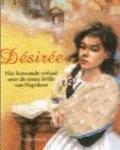
Desiree's Diary(Book Two)
Bernadottes new position now takes Desiree to the royal court of Sweden. Life there is very hard for the silk merchants daughter who almost married Napoleon in Marseilles. She is happier in Paris, even without her family. But Napoleon is still jealous of her husband. When he and Desiree meet, there is always trouble. And when war comes again, the two men are on opposite sides.
Napoleon does at last, on the island of St Helena. He had terrible faults, said Desiree. But he was my first love--- and Im not ashamed of those days in Marseilles. She goes back to Sweden and there she is crowned: the first Queen of the royal family of Bernadotte.
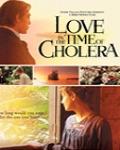
Love in the Time of Cholera
This is one of the greatest love stories I have ever read. … It is so beautifully written that it really takes you to another place in time and will make you ask yourself—how long could you, or would you, wait for love?
51 years,9 months, and 4 days, How long would you wait for the one you love?

The Defence of Poetry
Sir Philip Sidney (1554-86) is one of the most important writers of the English Ressaissance. In this book he turns his attention to the status of poetry in England.
Defense of Poetry (also known as A Defence of Poesie) — Sidney wrote the Defence before 1583. It is generally believed that he was at least partly motivated by Stephen Gosson, a former playwright who dedicated his attack on the English stage, The School of Abuse, to Sidney in 1579, but Sidney primarily addresses more general objections to poetry, such as those of Plato. In his essay, Sidney integrates a number of classical and Italian precepts on fiction. The essence of his defense is that poetry, by combining the liveliness of history with the ethical focus of philosophy, is more effective than either history or philosophy in rousing its readers to virtue. The work also offers important comments on Edmund Spenser and the Elizabethan stage.

No Country for Old Men
No Country for Old Men is a 2005 novel by American author Cormac McCarthy. Set along the United States–Mexico border in 1980, the story concerns an illicit drug deal gone wrong in a remote desert location. The title comes from the poem Sailing to Byzantium by William Butler Yeats. In 2007 a film adaptation was released, winning four Academy Awards, including Best Picture.

Common Sense
Common Sense was a pamphlet written by Thomas Paine. It was first published anonymously on January 10, 1776, during the American Revolution. Common Sense presented the American colonists with an argument for independence from British rule at a time when the question of independence was still undecided. Paine wrote and reasoned in a style that common people understood; forgoing the philosophy and Latin references used by Enlightenment era writers, Paine structured Common Sense like a sermon and relied on Biblical references to make his case to the people.Historian Gordon S. Wood described Common Sense as, the most incendiary and popular pamphlet of the entire revolutionary era.
- 上一頁1234567下一頁